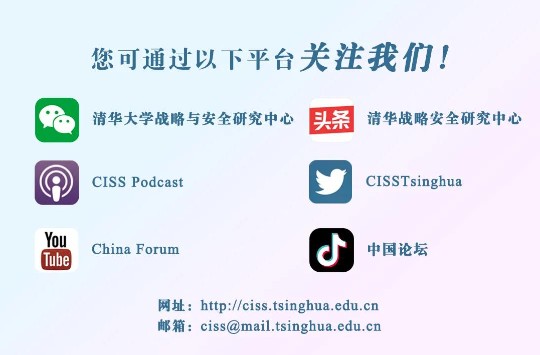近年来,中国作为全球第二大经济体,其发展路径与国际影响力持续引发国际社会广泛讨论。近日,贾恩家族研究所(Jain Family Institute)支持刊物Phenomenal World刊登对清华大学国际关系学系系主任、CISS中国论坛特约专家唐晓阳教授的专访“Common Characteristics--An interview with Xiaoyang Tang on China and the global South”。访谈探讨了中国发展模式、对外经济合作及其对全球秩序的参与和重塑等问题。唐晓阳提出,区别于“华盛顿共识”,“协同进化实用主义”(coevolutionary pragmatism)为全球南方等其他发展中国家提供了不同于西方范式的现代化参考。
该专访以英文、西语和葡萄牙语同步发布。中国论坛特此转发英文版,以飨读者。
For the United States and its allies, China’s rise from a low-cost manufacturing center to the world’s leading industrial and frontier tech power poses a fundamental challenge to the post-war international order. Intensifying competition over supply chains for critical technologies and strategic sectors reflects a broader struggle to shape the global landscape. For many countries in the global South, China is both an economy-shaping importer and a potential model for sovereign development.
To explore these questions, Phenomenal World editor Maria Sikorski spoke with Xiaoyang Tang, Chair and Professor of the Department of International Relations at Tsinghua University in Beijing and an expert at the China Forum. Their conversation covered China’s development trajectory, the complexities of its state-business relations and their influence on foreign economic engagement, its role in global governance, and its responses to recent geopolitical and geoeconomic shifts.
Maria Sikorski: Outside observers have characterized the Chinese development by contrasting it to the “Washington Consensus.” However, in your writing—including your 2021 book—you challenge the notion of a singular “Beijing consensus” by introducing the idea of coevolutionary pragmatism. What does this concept tell us about China’s own history of development, and its approach to other developing nations?
xiaoyang tang: The Washington Consensus adopted a strict logic of causal mechanisms and attempted to generalize them—it stipulates static variables that should lead to specific results. It identifies a cause-and-effect relationship between factors such as the free market and economic growth.
The Chinese experience suggests that viewing economic development through this analysis is overly simplistic—and that culture, existing economic institutions, historical economic institutions, style of educational system, form of government, and so on, all must move together in a country’s modernization process.
I find that the concept of coevolutionary pragmatism best explains this multidimensional and interactive relationship. The form of government is not a determinant factor in economic growth; it is correlated to it. For the economy to grow, the form of government must fit its current economic conditions, and it must adapt as the economy grows. In this type of multidimensional relationship, there is no fixed model for either the government or the economic structure that leads to development. Instead, you have a pragmatic view on how to adjust different factors operating inside a broader system to seek a better functioning relationship between all of them at each stage of development. In contrast to the prescriptions of the Washington Consensus, the search for the right combination of variables will be dynamic across national contexts and across time.
That is what China has been doing for the last forty or fifty years. Experimentalism and gradual change allowed China to find its fitting combination at each historical period.
MS: How does China’s history shape its approach to international development and finance? What guides Chinese infrastructure projects abroad and economic cooperation through trade and foreign direct investment?
XT: When you talk about international development and finance, infrastructure building, trade, and investment all come down to the question of modernization. All non-Western countries were and are forced to follow the Western path because Western modernization had enormous impacts on productive power, and no country could resist it. China learned this over a century-long period. With the 1978 market reforms, China understood that to modernize itself, it needed to foster economic productivity by operating in the global market and placing a new emphasis on infrastructure and technology. China’s approaches to trade, investment, and infrastructure building are all related to this modernization process—to increase productivity through the world market, there must be enough infrastructure to support commodity, labor, and information flows. This exchange of labor, commodities, and information allows production and the economy to scale up, fostering industrialization, which further stimulates the market to expand. This is what drives the Chinese approach to foreign economic engagement.
MS: Your work has focused on Chinese affairs in Africa. Can you explain how this broad view of Chinese economic development has impacted its activities on the African continent? To what extent has Chinese engagement succeeded in fostering industrial development and structural transformation in Africa, as opposed to merely finding sinks for overcapacity or securing raw materials?
XT: My research on Sino-African relations began with observing economic partnerships on the ground. At the beginning of the twenty-first century, Sino-African economic cooperation grew so much that it attracted worldwide.
Footnotes
1. Xiaoyang Tang, “Adaptation, innovation, and industrialization: the impact of Chinese investments on skill development in the Zambian and Malawian cotton sectors,” Journal of Chinese Economic and Business Studies 19:4 (2021): 295–313. DOI: 10.1080/14765284.2021.1943734 (Back)
2. Deborah Bräutigam, Xiaoyang Tang, “‘Going Global in Groups’: Structural Transformation and China’s Special Economic Zones Overseas,” World Development 63 (2014): 78–91. (Back)
本文2025年7月10日首发于“Phenomenal World”网站

